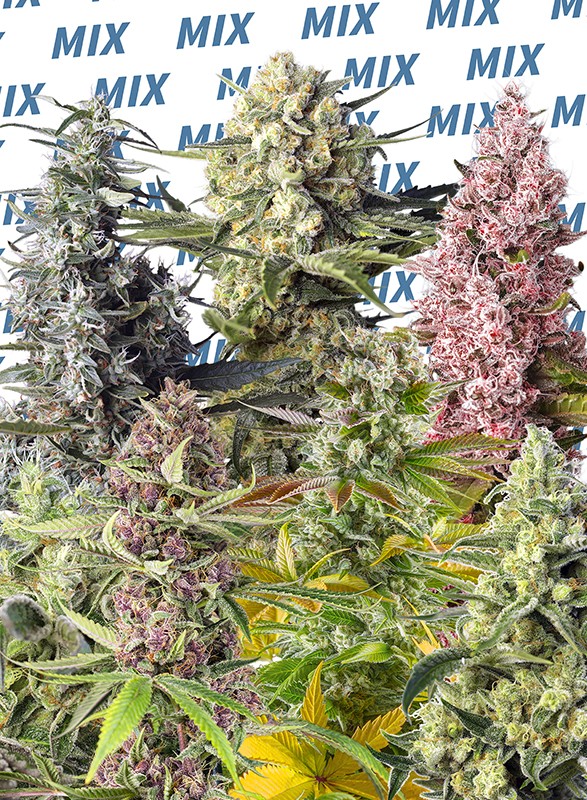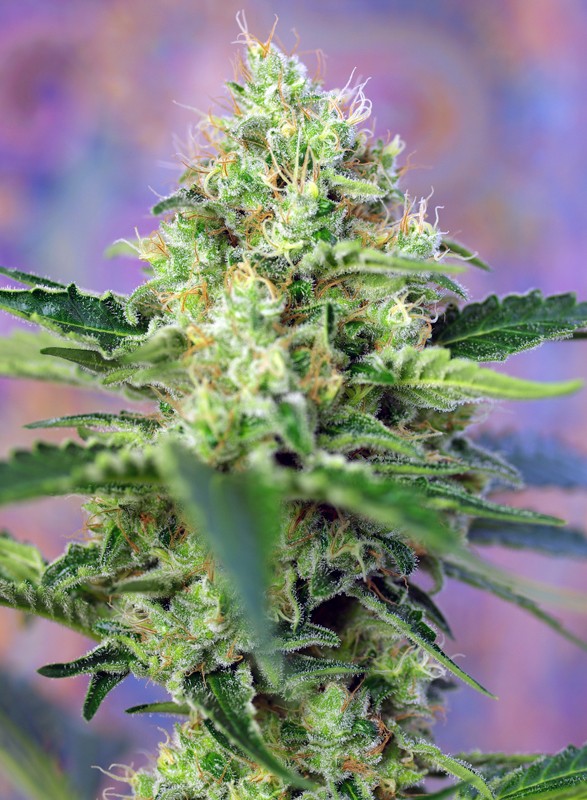In the development of this line we used a classic improvement method that can be applied to allogamous or partially allogamous species, which is the case of cannabis. In genetic terminology, this class of cultivars are known as Synthetic Varieties (V.S.).
Cream Caramel® (SWS04) is the result of the balanced mix of several of our best Indicas, chosen for its excellent agronomic, botanical and chemotypic qualities, such as production, type and intensity of the aroma, type and intensity of effect, plant structure, short flowering, number of trichomes, resistance to diseases, null tendency to hermaphroditism and, above all, also attending to their good qualities to create good hybrids.
To create Cream Caramel®, the three mainly indica genetic lines used were a BlueBlack hybrid (Blueberry ’99 x Black Domina ’98), a very special Maple Leaf Indica and a remarkably medicinal White Rhino developed in the Netherlands. Three lines that allowed for the formation of a balanced population composed by an equal number of specimens of each of the parental lines. Later on, we isolated each group of plants from the same strain to avoid any undesired self-pollination and to promote crossed pollination, making the most out of the heterosis (or hybrid vigour) and leaving them free for inter-pollination with only the other two parental lines.
All the plants from the three pollination chambers were then harvested and the seeds obtained from this first generation were mixed in equal number, forming a new generation containing all the possible hybrid combinations from the founding genetic lines. This generation, which we can designate by VS1, was then left to open pollination inside a closed chamber to avoid contamination with outside pollens. With this procedure we obtained a cross with all the possible hybrid combinations (VS2).
In this second generation, VS2, the seeds were created through random combinations of gametes from the three parental lines. These individuals are a well balanced panmictic population and all the following generations will be identical (if bred in open pollination and absence of selection) as the genic rates remain constant. In the following generations until VS5 we performed “massal selection” by choosing a high number of plants with very interesting agronomical characteristics to progress to the next generation, instead of leaving the process totally at random.
Cream Caramel® is a V.S. which shares with the hybrid varieties the goal of providing hybrid vigor and bringing homogeneity to the offspring, further fixing the most desirable traits through selection in successive generations. After five generations of free pollination and selection, the result is Cream Caramel®, a very stable and productive variety, featuring intense aroma and abundant resin, very adaptable to unfavorable conditions and environmental adversities (cold, drought, etc.) due to its great genetic bandwidth that gives Cream Caramel® a genetic flexibility to adapt to the medium that is even greater than in F1 Hybrids.
In order to obtain Cream Caramel®, as in the case of the other photoperiod-dependent varieties from the Sweet Seeds® collection, no males have been used in the fertilization, but modern methods of sex reversion have been applied to selected female plants, thus obtaining a V.S. which features a female offspring of around 99.9%.































